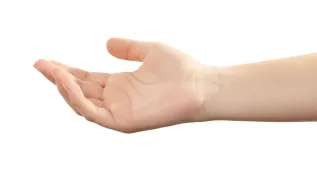
Polish scientists are working on a breakthrough implant that will accelerate bone damage healing and have anti-inflammatory and anti-microbial properties.
Involving scientists from several universities, the interdisciplinary project entitled 'Multifunctional Bioactive Composites for Regenerative Medicine of Bone Tissue' (OsteoRegNET), the aim of the group is to develop new polymer-ceramic composite biomaterials that would be used in regenerative medicine of bone tissue.
Dr. Karolina Rudnicka from the Department of Immunology and Infection Biology at the Faculty of Biology and Environmental Protection, University of Lodz said: “Bioactive composites are implants that will replace natural bone tissue, and most importantly speed up its healing process and ensure the correct bone reconstruction without the risk of inflammation.
“The substances included in the implant have already been tested and we are convinced of their effectiveness.
“These substances may be anti-inflammatory, anti-microbial or pro-regenerative which will help the implant to cooperate with human body more effectively.”
She added that that implant developed in the project will contain composites that have already been tested and deemed the most beneficial for the regeneration process of the damaged bone tissue.
Similar solutions are already being implemented around the world but they do not involve the substances that Polish researchers are working on.
These substances include innovative polymer-ceramic base covered with growth factors that support blood supply in the VEGFA implant, and anti-inflammatory factors TGF-beta.
Dr. Rudnicka added: “Their function may be compared to a message that is sent by the immune cells to inform other cells of what should be produced in a human body. We can use these messages when preparing an answer. We inform the cells that we do not want any inflammation in the body and get their reaction. The same answer would be received in the physiological process, but it would take much longer.”
The composites have many functions, including the stimulation of bone cells to ensure proliferation and production of bone tissue (osteoinductive properties), pro-regenerative activity that supports cell regeneration, anti-microbial (using antibiotic) and anti-inflammatory properties.
Another important function of the implant is its biocompatibility. The implant cannot be toxic, cause any allergies or irritate the cells.
Rudnicka said: ’We are testing this using cell models as well as in vivo, which ensures that the implants will not only be active, but also safe.”
The project, which includes scientists from the Wrocław University of Technology, the Cracow University of Technology and the Łukasiewicz Research Network - Institute of Ceramics and Building Materials, has been conducted for two years.
The researches already know which substances, in which concentrations and form, may support bone regenerative processes.
Dr. Rudnicka said: “We can also extract them, and that is why in the future we will be able to add these agents, for example, to hydrogel dressings to improve the healing process.”
The main objective of the project is to create an implant for people with bone damage that will significantly reduce their time of hospitalisation and rehabilitation.
The researchers are already negotiating with companies that manufacture implants in order for the product to appear on the market.
Rudnicka said: “We are also consulting surgeons and transplant surgeons. We talk about their expectations, try to determine whether it is possible to use our implants, and establish how fast the implant should metabolise within the body. Our ultimate plan is to sell the licence to a company that will put our product on the market.”
Financed by the Foundation for Polish Science, the total budget of the project is PLN 12 million, of which 4.5 million will be used to finance the creation of a team and biological research carried out by the team from the University of Lodz.
(PAP)
author: Bartłomiej Pawlak
bap/ agz/ kap/
tr. RL













